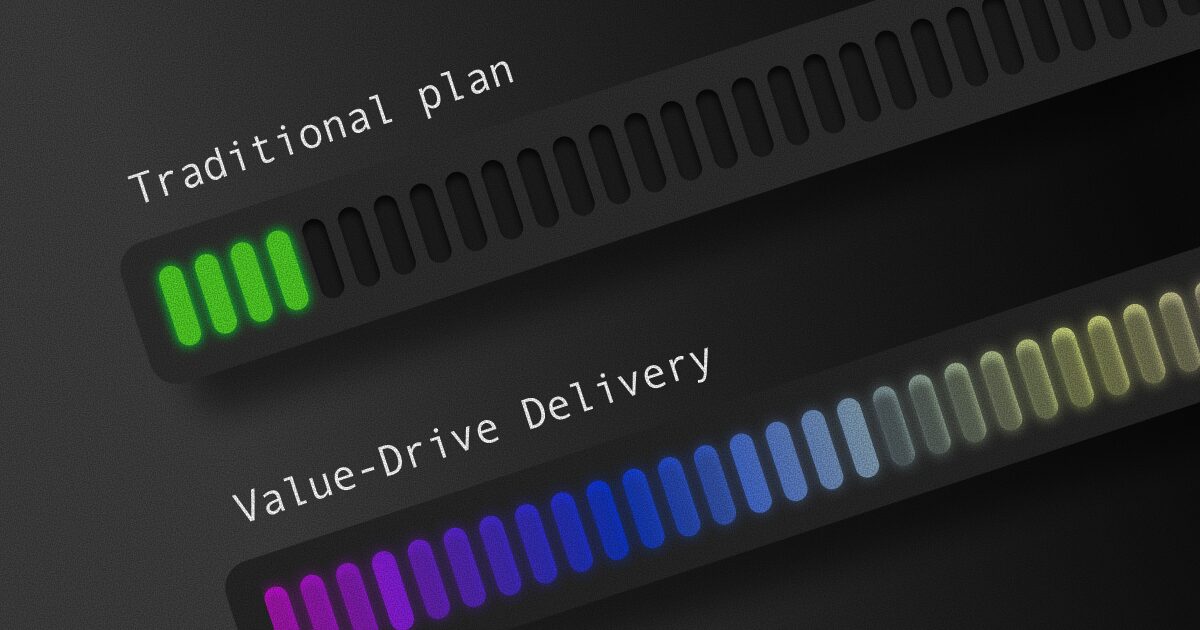June 26, 2025 - 6 min
Technology Due Diligence: From Insight to Action

Have you ever come across the term due diligence in a tech context?
By definition, technology due diligence is a comprehensive process of investigating, evaluating, and verifying the technical, operational, and financial aspects of a system, service, or organisation. Sounds fancy, but in practice, it’s a smart and focused way to understand where your product, process, or team stands, and where things might be falling apart under the surface.
Clients usually come to us with a hunch: something’s off. Delivery is slow. Bugs are piling up. Or they’re about to scale, raise funding, or switch vendors and want a clearer view of what they’re working with. That’s where we step in.
At Q, we offer technology due diligence across a few key technical domains or areas:
- Solution Architecture
- Backend
- Frontend
- DevOps
- Project Management
- Quality Assurance
- Business Analysis
- UX/UI Design
During the analysis we focus on:
- Code Quality & Maintainability Review
- Product & Development Team Assessment
- Financial, IP & Data Management
- Infrastructure, Performance & Scalability Analysis
- Security, Compliance & Risk Management
Depending on your needs, we tailor the assessment to cover the right combination of both. The point is – we start by understanding your context and build from there.
Depending on the need, we split our process into two main tracks:
- Technical Screening – covering Solution Architecture, Backend, Frontend, and DevOps
- Process Screening – covering Project Management and Quality Assurance (and sometimes UX, depending on the scope)
Let’s break it down.
How Technical Due Diligence Works (Step-by-Step)
There are five steps in our technical due diligence process:
1. Project Kick-Off
We start with a discussion: What’s your context? What exactly should be screened? This phase is all about setting a clear direction and scope for the review.
2. Setup & Preparation
We agree with the client on what goes through automated vs. manual screening. Our team sets up the environment locally and integrates our internal screening framework. The goal is to make sure everything runs smoothly and is ready for assessment.
3. Automated Analysis
Here’s where tools come in: SonarQube, Snyk, CursorAI, and others. We run static analysis and gather objective metrics. Before we use any AI-driven tools, we always get client approval. This phase gives us a solid, unbiased view of code quality and security.
4. Expert Review
Tools are great, but context matters. Using our internal Q Tech Screening framework, we go deeper: code architecture, maintainability, patterns, and pain points. It’s category-based and backed by experience.
5. Final Report & Recommendations
Everything we find regardless is it good, bad, and in between, is consolidated into a structured report. We don’t just deliver it. We present it. Explain it. Make sure the right people understand it.
How Process Due Diligence Works
While technical screening is hands-on with the code and infra, process screening looks at how things actually get built and delivered. It has three steps:
1. Kick-Off & Initial Assessment
Same as above, define the scope, understand the context, and agree on focus points.
2. Process Evaluation
We review your workflows, tools, ceremonies, documentation, and communication structures. We look at how teams work. Not just what they build.
But we don’t rely solely on documentation (which, let’s be honest, is often outdated or incomplete). To get a full picture, we use interviews, observation, and “shadow mode” sessions with key team members. This helps us understand the real process, not just what’s on paper.
3. Reporting
We prepare a comprehensive report that includes key findings, context around their impact, and a clear, actionable plan for how to address them. This isn’t just a list of issues—it’s a roadmap tailored to your priorities, helping you move from insight to implementation.
In short:
Findings + recommendations = the foundation for your improvement plan.
So, What Happens After the Assessment?
Here’s the thing: technology due diligence isn’t the finish line, it’s actually the beginning.
Once the report is delivered, the next step is action. Ideally, the client wants to implement the proposed changes. That’s when we roll up our sleeves and continue the collaboration.
But it’s not a fixed path. Some clients choose to start improvements internally, using their own teams and resources. Others decide to move forward with us and most often with the same team that conducted the due diligence. Why? Because that team already understands the context, pain points, and opportunities.
If that’s the case, we:
- Keep the same team that did the assessment
- Draft a per-domain backlog
- Develop a roadmap (short-term quick wins + long-term transformation)
- Coach teams where needed
- Track KPIs like velocity, cycle time, and stakeholder satisfaction
- Iterate based on feedback and data
It’s not a one-time review. It’s a journey, and we stay with you.
Case Study: Spartan Race
One of our first due diligence engagements was with Spartan Race, an endurance and fitness company based in Boston, USA.
Founded by Joe DeSena in 2010, Spartan is now the world’s largest obstacle race brand, with over 200 events annually across 40+ countries. Their ecosystem includes training, nutrition, health products, and media content.

Their Challenge
Spartan’s dev efforts were led by a European vendor team, while the product and tech leadership sat in the US. They were operating in a reactive, maintenance-heavy way and wanted a clear view of their weak spots, with recommendations for improvement.
After a few initial calls, we mapped out their current setup: Backend, Frontend, DevOps, QA, and a blended PM/PO/BA role. UX/UI wasn’t a formal role on their side, but we saw enough red flags to include that in our assessment too.
How We Worked
The full technology due diligence process took four weeks for the critical areas defined as the scope of analysis. Given the timezone difference, we coordinated meetings in the late afternoon and used mornings for deep dives into documentation and code. Communication was primarily over Slack.
Some challenges we faced:
- No direct access to the external non-native English speaking development team, which required a lot of patience and follow-ups
- Response times were sometimes slow
Still, we managed to complete both technical and process reviews thoroughly. And the results were clear.
Findings & Impact
Our analysis uncovered critical technical and structural vulnerabilities that could compromise Spartan’s scalability, stability, and security. Many of these risks weren’t visible on the surface, but became clear through a structured deep-dive.
We also found clear opportunities to reduce operational costs, especially via AWS optimisation. These were not hypothetical gains, they were real, measurable savings.
The final report delivered:
- A clear gap analysis
- Actionable recommendations per domain
- A roadmap for both tactical and strategic improvements
Since then, we’ve continued working with Spartan on implementation and upgrades.
Post-Due Diligence: Real Work Begins
Here’s what’s happening on the ground now:
Backend & Frontend
- Code coverage introduced
- Documentation practices implemented
- Refactoring key parts for stability and readability
- Establishing CI/CD pipelines for safety nets
Project Management
- Introduction of a Project Manager role to enable the Product Manager to fully focus on what really matters
- Full transition to Scrum
- Introduction of ceremonies
- Estimation guidelines defined
- Centralised documentation and a real product roadmap being prepared
Quality Assurance
- Defining better acceptance criteria
- Standardising test processes
- Improving defect tracking and prioritisation
DevOps
- AWS optimisation
- Access keys rotation policy introduced
- IAM roles reviewed
- Basic security alerts in place
- Monitoring via Grafana
- Rollback enabled
- Merge approval workflows set
All of this, without blocking feature delivery. That’s always the hardest part: making improvements without disrupting the roadmap. It requires trust, collaboration, and laser-sharp coordination.
Conclusion: It’s Not Just a Report, It’s a Turning Point
Technology due diligence is not just about ticking boxes or generating a long list of issues. It’s about creating clarity where there was uncertainty. It’s about translating observations into opportunities, and giving leadership teams the insight they need to make confident, forward-looking decisions.
For many companies, especially those scaling fast or navigating complex tech ecosystems, the real risks aren’t always visible. You don’t see them until something breaks or even worse, until you hit a wall that stalls growth. What we offer is a flashlight and a deep dive into those blind spots. Not only to highlight what’s not working, but to suggest what could work better.
The Spartan case is a great example. It wasn’t just a technical review, it was a full-circle analysis that combined architecture, process, product mindset, and operational dynamics. And we didn’t stop at identifying problems. We mapped out the road, lit up the path, and stayed on it with them. In a short period of time Spartan experienced a transition: more structure, better prioritisation, smarter tooling decisions, and above all, a team that’s starting to feel more confident in the way they work.
That’s the part we care about most.
Whether you’re a startup feeling with growing pains, a scale-up stuck in slow motion, or an established enterprise seeking fresh perspective, due diligence could be your smartest next move.
Give Kudos by sharing the post!






